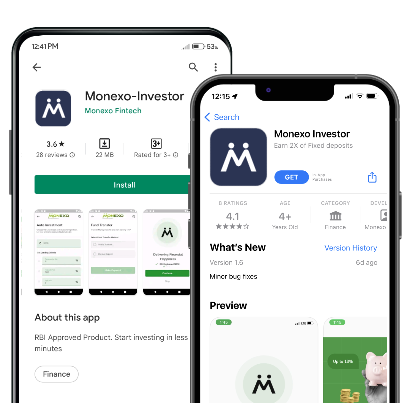RBI has released the regulatory framework for Peer to Peer lending in India – ushering them in as a new class of NBFCs.
At Monexo, we welcome RBI’s decision to regulate Peer to Peer lending platforms as a new class of Non Banking Financial companies (“NBFC – P2P”).
The Master Directions for P2P platforms released on the 4th of October reiterate the regulator’s belief in the potential P2P lending has as an alternative credit channel and its ability to deepen financial inclusion while providing investors the opportunity to access lending as an asset class for better returns and portfolio diversification.
Monexo was the first P2P lending platform in India to implement the Escrow account framework for transfer of funds between lenders and borrowers and to also initiate credit bureau reporting of loans disbursed through the platform. We are happy to note that the RBI has clearly recognised and recommended the use of both these practices as part of the final regulatory framework.
Here are a few key takeaways from RBI’s final guidelines for P2P lending :
Eligibility criteria :
● P2P platform must be incorporated in India and should have net owned funds of atleast INR 2 crores
● The management and directors of the P2P platform need to fulfill the ‘Fit and Proper’ criteria as laid out by RBI
Scope of permitted activities :
What activities can be performed by the platform :
● Platform can undertake activities pertaining to borrower due-diligence, credit assessment and risk profiling
● Platform can independently determine loan pricing and fix interest rates for borrowers based on the Annualised Percent Rate (“APR”) format
● In addition, P2P platform can also help in facilitating loan disbursal, repayment collection and pursuing collection efforts to recover outstanding dues
● P2P platform can become members of credit bureaus and report loan performance
And what is not allowed :
● P2P platform cannot hold any lender or borrower funds on it’s balance sheet – this prevents platforms from direct lending, co-lending or deposit raising from lenders
● P2P platform to not provide any credit enhancements or credit guarantee
● P2P platform to deal only with unsecured lending – no secured loan products can be offered through the platform
Lender and borrower exposure :
● A lender’s exposure in P2P lending across all P2P platforms to be subject to a maximum cap of INR 10 lakhs with individual exposure on a specific borrower not exceeding INR 50,000
● Aggregate loans availed by a borrower across all P2P platforms to not exceed INR 50,000
● Maximum tenor of loans availed on the platform to not exceed 36 months
Disclosure and reporting requirements :
● P2P platform to disclose lender details pertaining to the loan (expected returns, fees etc.)
● P2P platform to disclose on it’s website details of the credit scoring process along with monthly portfolio performance and measures taken to protect customer data
● Platform to ensure that every loan disbursed through the platform is backed by valid loan agreements between lenders, borrowers and the NBFC P2P.
● P2P platforms to have a Board approved Business Continuity Plan
● Establish a Fair Practices code which ensures that lenders are informed and acknowledge the risk involved in P2P lending
With the regulatory framework in place and RBI giving existing platforms 3 months to comply with the guidelines, P2P lending is on it’s way to becoming a mainstream and a more effective way to lend and borrow
The success of the model globally throws interesting insights into how P2P lending can evolve to service the credit requirements of aspirational, digitally savvy borrowers who expect a more inclusive, instant framework of access to credit. With a significant drop in fixed deposit rates and other asset classes like real estate performing poorly, P2P lending is also poised to fill in a significant vacuum in the investor’s portfolio as an attractive alternative debt investment for high yield and regular income.
To read the full version of RBI’s guidelines on Peer to Peer lending platforms, please click here




